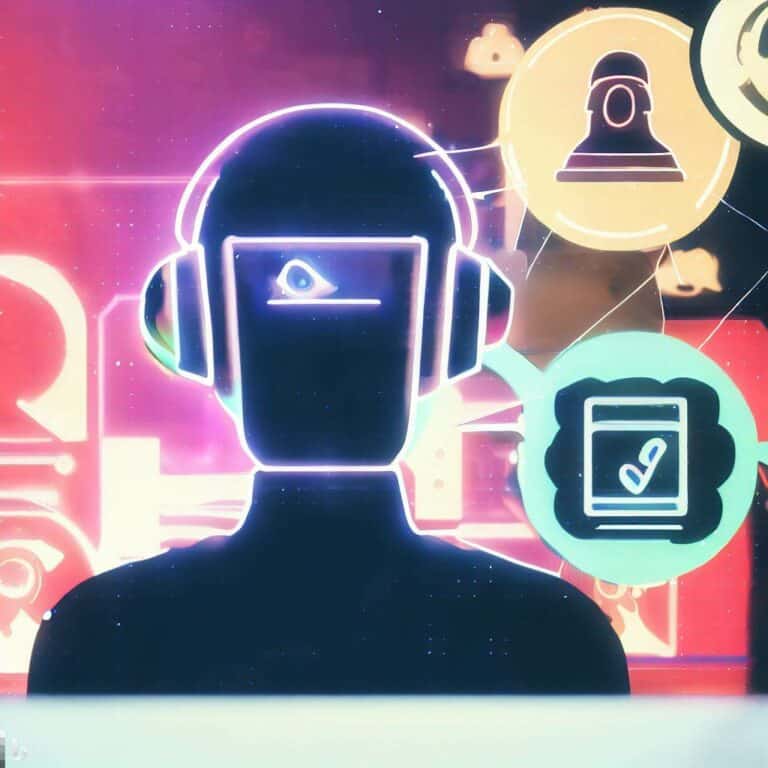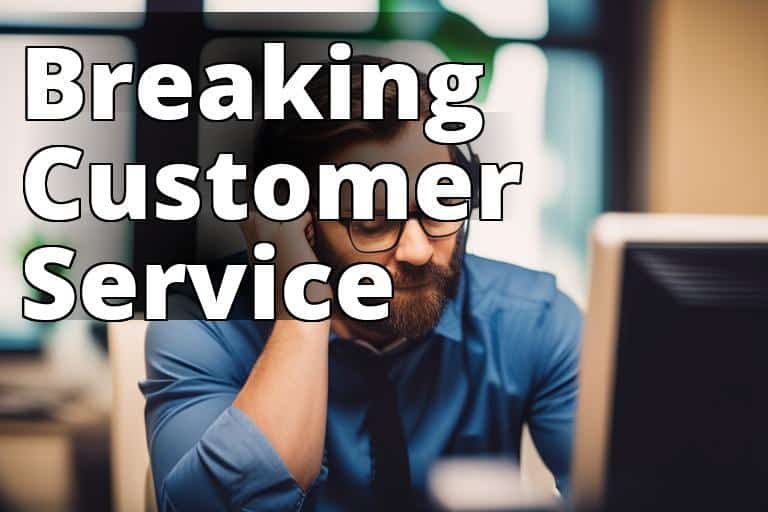Customer Service Training Techniques: Boosting Your Team’s Performance
Training techniques in customer service are essential for businesses aiming to improve customer experience and drive customer satisfaction. Effective customer service training can transform an average service team into a group of skillful professionals who perform consistently well in their interactions with customers. By focusing on the development of critical skills, such as clear communication, empathy, problem-solving, and adaptability, organizations can ensure that their customer service representatives are well-equipped to meet and exceed customer expectations.

To create an impactful customer service training program, companies must explore various strategies, exercises, and ideas. Techniques can range from reflective listening, which helps ensure customers feel understood, to culture training that aligns employees with the company’s core values and standards of service. With the right training tactics, customer service teams develop the prowess to handle diverse scenarios with grace, making every customer interaction a positive and memorable one.
Moreover, it’s becoming increasingly important to tailor the training process to modern learning methods, using a blend of videos, interactive modules, and hands-on practice. Resources like The Ultimate Guide to Training for Customer Service & Support and 10 Customer Service Skills for Success highlight how innovative approaches to customer service training can lead to stronger skills across the team, resulting in a higher caliber of customer support. As the storefront of a business moves beyond the physical realm into the digital, proficient, and personable customer service becomes all the more crucial for business success.
The Importance of Customer Service Training
Investing in comprehensive customer service training can transform the quality of service delivered to customers. Effective training equips customer service reps with crucial skills that ensure customers feel heard, valued, and satisfied.
Benefits of Quality Training
Quality customer service training brings a multitude of benefits to an organization. Trained customer service reps will better understand customer needs and handle inquiries with empathy and efficacy. Quality training involves:
- Active Listening: Ensuring that customers are fully understood.
- Problem-Solving: Equipping staff with tools to effectively resolve issues.
- Product Knowledge: Comprehensive knowledge leads to faster and more accurate responses.
Trainings such as Effective Techniques for Success highlight these skills as cornerstones for exceptional customer service.
Impact on Customer Retention and Churn
The impact of training on customer retention can be significant. Customers tend to stay loyal to brands that provide excellent service, while inadequate service can lead to increased customer churn. Statistics suggest:
- Retention: Companies with strong service have customer retention rates at 92%.
- Churn: Poor customer service causes as much as 67% of customer churn.
Exceptional training programs, such as those outlined in The Ultimate Guide to Customer Service & Support, address these areas, aiming to keep customers happy and loyal.
Establishing a Service Culture
A pivotal aspect of exceptional customer service is embedding a robust service culture that mirrors the enterprise’s core values. This not only shapes the team’s customer service skills but also ensures that staff embrace a customer-first attitude in every interaction.
Incorporating Company Values
Companies should integrate their core values into all customer service training programs. By doing so, they make sure that every team member from top to bottom lives and breathes these values, which is crucial for delivering a consistent service experience. For instance, if “customer commitment” is a value, they may:
- Highlight Stories: Share narratives where employees went above and beyond for customers.
- Role-Playing: Use scenarios in training to allow employees to practice how to embody company values in real-life customer interactions.
Creating a Customer-First Attitude
Developing a customer-first attitude involves shifting focus from transactions to relationships. It’s going beyond “Have a nice day” to genuinely making the customer feel valued. They can:
- Train staff to anticipate customer needs based on past interactions.
- Reward employees who demonstrate an exceptional customer-first mentality.
By prioritizing a service culture through these methods, a business enhances its reputation as a company that truly values its customers and provides outstanding service.
Essential Customer Service Skills
Customer service training focuses on developing key competencies, such as clear communication and the ability to listen and empathize, which are crucial for delivering exceptional service.
Developing Effective Communication
Communication skills are vital in customer service. They can effectively convey information, ensuring customers understand policies and procedures without confusion. According to Forbes Advisor, service professionals should keep their messages clear and avoid jargon that can obscure meaning. Writing skills are equally as important as verbal communication when interacting with customers through emails or chat.
Mastering Active Listening and Empathy
Active listening involves paying close attention to the customer’s words, pausing before responding, and asking clarifying questions, as highlighted by a report from Help Scout on key customer service competencies. Empathy, on the other hand, allows customer service representatives to connect with customers on a personal level, often diffusing tense situations. Together, these skills allow agents to not only understand but also effectively respond to customer needs and concerns, thereby enhancing the overall service experience.
Techniques for Problem-Solving

When diving into customer service, it’s apparent that problem-solving is at the core of providing great support. They’re not just resolving immediate issues but also preemptively addressing potential concerns. Here’s how they tackle the gritty details of problem-solving head-on.
Strategies for Handling Customer Complaints
Handling customer complaints isn’t just about finding quick fixes; it’s about genuinely listening and responding with empathy. Firstly, active listening is the foundation. They give customers their full attention, picking up on subtleties in the conversation to better understand the root of the issue. Often, teams deploy the 4 steps of a problem-solving approach to ensure every complaint is met adequately, without missing beats like letting the customer share their side unabridged.
Secondly, utilizing conflict resolution techniques is crucial. A common approach involves restating the problem as understood to ensure there’s no miscommunication, followed by collaborative brainstorming of solutions, ensuring customer expectations are managed throughout the process. They know that sometimes, it takes a cool head and clear communication to de-escalate and resolve issues.
Effective Solutions for Common Issues
Every customer service team has a toolbox of solutions for common issues, developed from experiences and proactive learning. Teams identify patterns in complaints and create standard operating procedures (SOPs) to address them efficiently. For example, they might have scripts or guidelines when dealing with a frequently reported technical glitch or a known service shortfall.
What makes these solutions effective is their ability to adapt to unique situations. Each team member possesses strong problem-solving skills that help them tailor general solutions to specific customer cases, always with a hint of personal touch. When these skills are paired with an in-depth understanding of the product or service, they swiftly guide customers from frustration to satisfaction. They might refer to guides such as Effective Techniques for Success to keep their problem-solving approaches sharp and effective.
Training for Product Knowledge

Effective customer service hinges on deep product knowledge, ensuring that reps can confidently address customer inquiries and issues. Product training programs are essential for fostering this expertise and ensuring that service teams achieve competency in product use.
Implementing Comprehensive Product Training
One kicks off their product training journey by introducing employees to a structured curriculum. Materials might range from manuals to interactive modules that delve into product features, benefits, and potential troubleshooting scenarios. For example, the Ultimate Guide to Training for Customer Service & Support by Jeff Toister provides a robust approach to training that can be tailored to one’s company’s needs. Sessions should employ various teaching methods, from visual presentations to hands-on tasks, to cater to different learning styles.
- Visuals: Use images and diagrams to illustrate product components.
- Hands-on: Practice simulations to resolve common product issues.
Ensuring Competency in Product Use
After employees have undergone product training, it’s crucial to assess their understanding and application. Competency can be measured through methods like rapid-fire Q&A sessions, as described in 30 Amazing Customer Service Training Ideas, where a detailed grasp of product specifications is tested in a playful yet competitive manner. Another key component is providing ongoing support and resources, such as Just In Time (JIT) resources recommended by iSpring.
- Interactive Q&As: Frequent product quizzes reinforce knowledge retention.
- JIT Resources: Offer real-time access to product information to assist customer interactions.
Enhancing Emotional Intelligence

Enhancing emotional intelligence in customer service is critical for developing better relationships between staff and clients. Emotional intelligence is the backbone of effective soft skills, which are indispensable during customer interactions.
Building Patience and Understanding
Being patient is foundational to understanding customers’ needs and concerns. Customer service training can incorporate exercises that focus on active listening and delaying response to ensure the customer feels heard. Role-playing scenarios that involve challenging customer interactions can help staff practice maintaining composure and fostering a genuine understanding. By assessing the current level of emotional intelligence, trainers can tailor these exercises to their teams’ specific needs.
Leveraging Emotional Responses
Training customer service teams to leverage their emotional responses involves teaching them to recognize and manage their emotions during interactions. They can use empathetic language to validate customer concerns and offer solutions that align with customers’ feelings. Teams can benefit from learning the different aspects of emotional intelligence, such as self-regulation and empathy, and how to apply them during service encounters. Practices from Improving Communications highlight the importance of balancing both the customers’ and their own emotional responses to maintain a positive exchange.
Innovating with Technology

In customer service, leveraging cutting-edge technology and tools can dramatically enhance the efficiency and quality of support provided to customers. Strategic use of technology can not only streamline service operations but also create a more personalized experience for customers.
Utilizing CRM Systems Effectively
A well-integrated Customer Relationship Management (CRM) system sits at the heart of any modern customer service strategy. It allows customer service teams to track interactions, manage queries, and analyze customer data seamlessly. For instance, a CRM can help pinpoint common customer issues, leading to faster resolution times and improved customer satisfaction.
Tips for effective CRM use:
- Personalize Customer Interactions: By harnessing data from the CRM, service agents can tailor their approach to fit the individual customer’s history and preferences.
- Automate Workflows: Set up the CRM to automatically route tickets and follow up on unresolved issues, which helps in reducing response times.
Adopting New Tools and Trends
Staying abreast with technology trends is key to innovative customer service. The adoption of chatbots, for example, falls neatly into this space. They can handle routine queries efficiently, without human intervention, making them a powerful tool for offloading simple tasks.
- Exploring Chatbots:
- For basic inquiries: Chatbots can provide quick answers to FAQs, allowing human agents to focus on more complex cases.
- For customer engagement: Modern chatbots are equipped with machine learning capabilities, making them more conversational and adept at engaging customers meaningfully.
New technology adoption checklist:
- Evaluate its impact on service quality and efficiency.
- Seek feedback from both customers and service agents.
- Provide adequate training and resources for using new tools.
Adopting these innovative techniques is not a one-time task but an ongoing process that continues to evolve with the technology.
Elevating Support through Teamwork

Building a stronger support framework hinges on the idea of unity among customer facing teams. When they sync up their skills and knowledge, the boost in service quality becomes noticeable and measurable. Below are some focused techniques to amplify collaboration and strategic support across various functions.
Encouraging Team Collaboration
Team collaboration is the bedrock of outstanding customer support. It’s vital for members to speed up and streamline communication, ensuring everyone is on the same page. By getting aligned on core beliefs and values, support reps can provide a more cohesive and seamless customer experience. Regular team-building exercises and an emphasis on knowledge sharing can strengthen interpersonal relationships and improve collective problem-solving.
Cross-functional Support Strategies
For customer facing teams to thrive, integrating cross-functional support strategies is a game-changer. Encouraging them to step into each other’s shoes and understand different roles can lead to better customer insights and more efficient service. For instance, making customer data accessible to everyone empowers each team member to provide personalized service and issue resolution without unnecessary delays. This approach ensures that customers receive expert help regardless of which team member they engage with.
Ongoing Training and Development

In customer service, the learning journey never truly ends. Effective teams adapt to new trends and technologies through consistent education and skill refinement.
Importance of Continuous Improvement
Continuous improvement in customer service is crucial for keeping skills sharp and staying competitive. Organizations often deploy a mix of ongoing training and coaching to ensure that service representatives evolve with the changing landscape of customer expectations. They use various platforms like SkillPath or GoSkills to deliver current, skill-enhancing instruction that can be immediately applied in the workplace.
- SkillPath: Provides a broad spectrum of professional development courses that one can tailor to service teams.
- GoSkills: Offers bite-sized courses designed to teach essential customer service skills.
Advanced Training Techniques
To further empower employees, companies implement advanced training methodologies. These may include access to online courses from platforms such as edX and Alison, which offer a range of lessons on complex customer service scenarios and management skills. Business Training Works and Dale Carnegie are also notable for specialized workshops that push the envelope on traditional customer service training by introducing high-impact communication techniques and leadership strategies.
- edX: Features courses from notable institutions for customer service professionals seeking to deepen their industry knowledge.
- Alison: Provides free online courses, including certificate and diploma-level training.
- Business Training Works: Known for customized, onsite workshops that focus on specific customer service challenges.
- Dale Carnegie: Stands out for its leadership training that transcends typical customer service roles, emphasizing interpersonal skills and confidence building.
Maximizing Customer Service Success

In today’s competitive landscape, customer service isn’t just about addressing issues; it’s a strategic piece in building long-term relationships and differentiating from competitors. This section uncovers how measuring and enhancing customer lifetime value and gaining a competitive advantage through service excellence can propel a business to new heights.
Measuring and Enhancing Customer Lifetime Value
Understanding and boosting Customer Lifetime Value (CLV) is paramount for any organization. It represents the total revenue a business can expect from a single customer account, and it serves as a crucial metric for gauging the success of customer service training programs. Businesses should leverage data analytics to track customer interactions and transactions. This practice allows them to tailor their services and training programs to encourage repeat business and referrals, ultimately amplifying the CLV.
For example, an effective customer service training program might emphasize role-playing scenarios that enable agents to practice empathy and problem-solving—skills that can lead to increased customer satisfaction and loyalty. Companies could benefit from ongoing coaching and setting performance metrics that align with enhancing CLV.
Gaining Competitive Advantage Through Service Excellence
Service excellence gives companies a significant edge by transforming customer service from a cost center into a strategic asset. Well-trained agents equipped with the right tools and knowledge can provide personalized experiences, making customers feel valued and underscoring the brand’s commitment to service quality. This strategy not only retains existing customers but also attracts new ones through positive word-of-mouth.
Businesses should invest in continuous customer service management training to ensure that their workforce stays updated on the best practices for customer success. By doing this, employees can confidently handle a wide array of situations with proficiency and finesse, setting the company apart from competitors and cementing a reputation for reliability and excellence.
Frequently Asked Questions

In today’s competitive business landscape, integrating effective training techniques is critical for enhancing customer service skills. It’s about finding the right resources and exercises that resonate with your team and align with your company’s values.
How can I improve my team’s customer service skills with training techniques?
Improving a team’s customer service skills through training techniques involves implementing a mix of theory and practical exercises. Courses by experts, such as Jeff Toister’s Innovative Customer Service Techniques, can provide valuable insights in a short time frame. Interactive role-playing scenarios and consistent feedback are effective strategies for skill enhancement.
What are some effective activities to include in customer service training sessions?
Effective activities to include in customer service training sessions range from role-playing common customer scenarios to personality tests like the DiSC profile. These activities can help employees understand diverse customer behaviors and develop strategies to address them effectively.
Where can I find free materials to help with customer service training?
Free materials for customer service training can be sourced from various online platforms that offer complimentary trials or resources. For instance, many industry blogs and educational websites provide customer service training manuals and guidance, often complemented by free-to-use imagery and templates.
What are examples of customer service games that can boost my team’s performance?
Customer service games that can boost a team’s performance include simulations that gamify the problem-solving process. For example, creating customer avatars and having employees navigate different service challenges can make learning fun and effective.
Can you suggest any customer service training exercises for my employees?
Suggesting customer service training exercises such as mock calls or email responses can help your employees practice handling real-world scenarios. Emphasizing culture training ensures that trainees understand and embody the company’s ethos during customer interactions.
What’s a good structure for a customer service training manual?
A good structure for a customer service training manual includes clear sections that cover company values, standard operating procedures, role-specific guidelines, and situational problem-solving tactics. It should serve as a comprehensive go-to resource for your customer service team.




